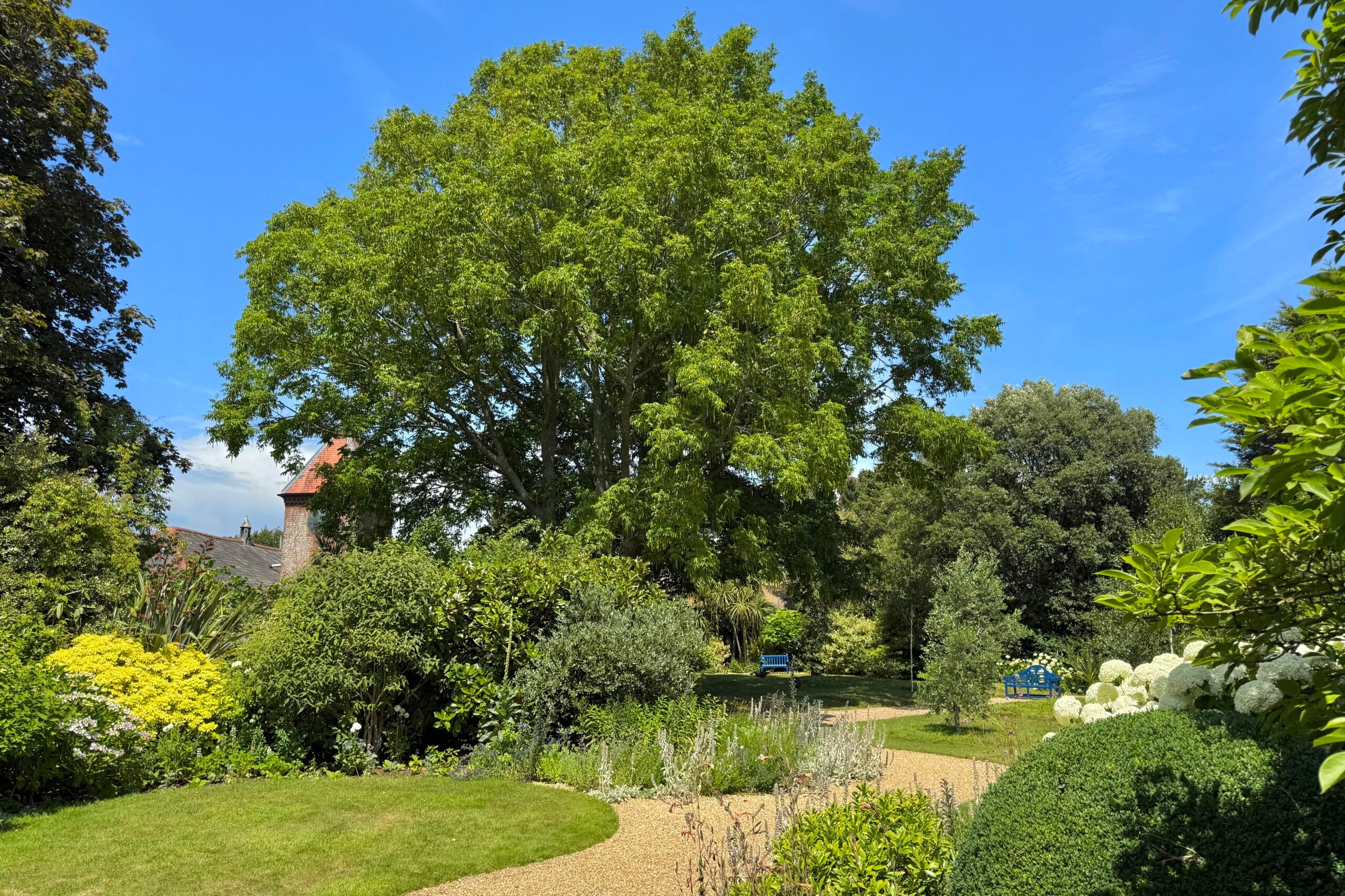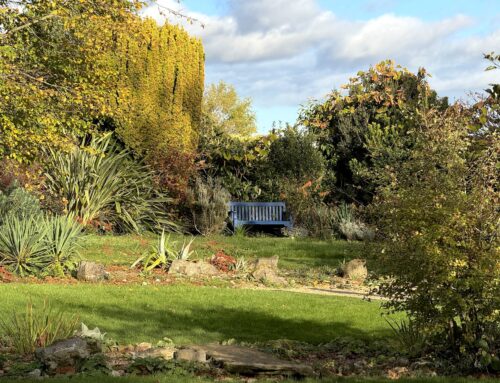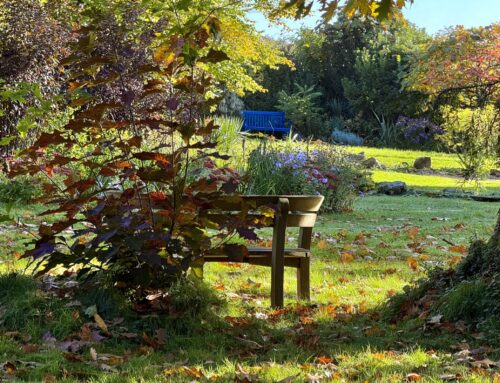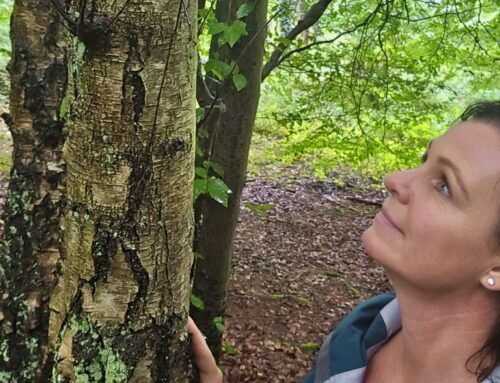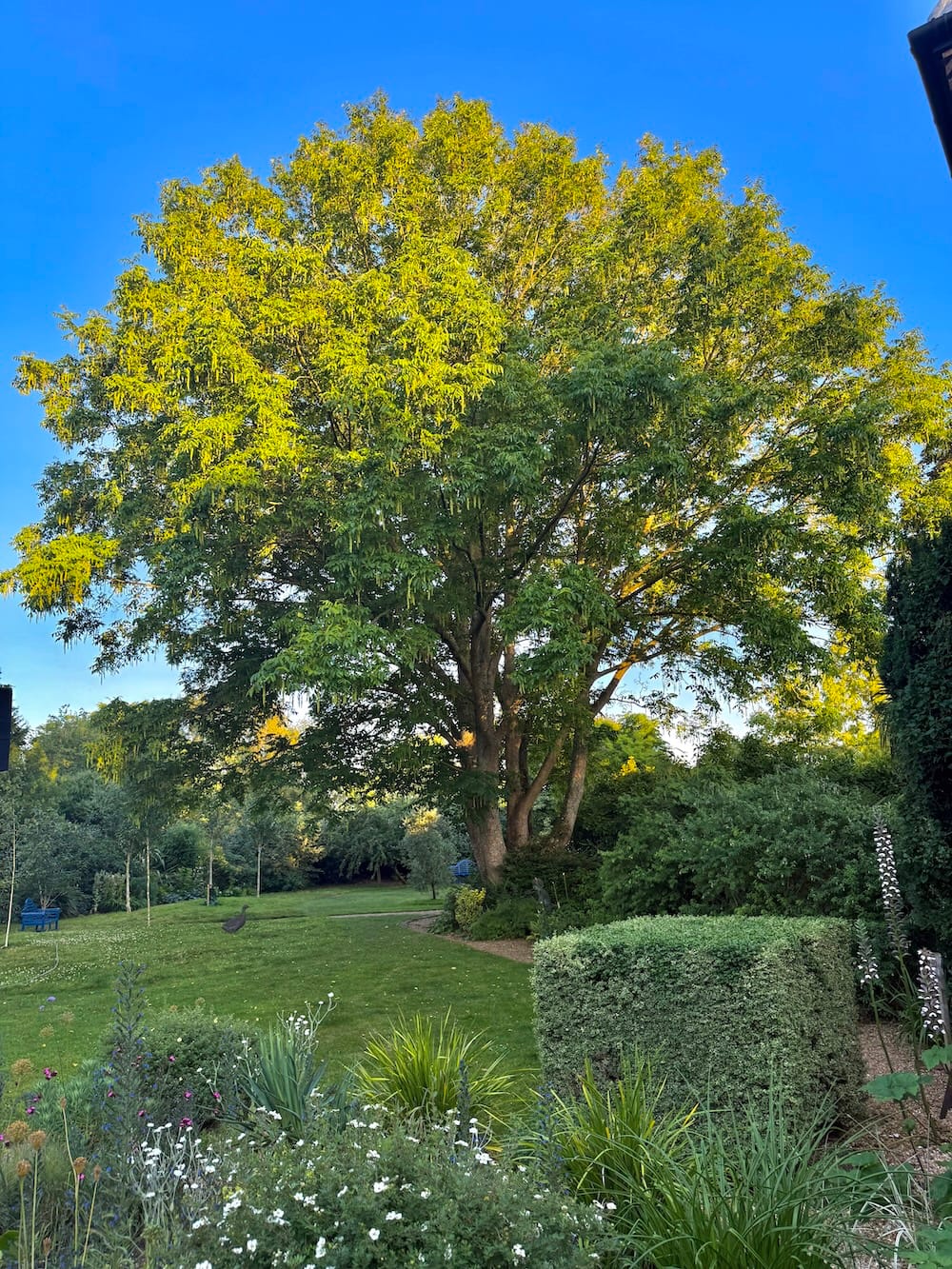 Mike’s favourite tree dominates the Clock House Garden and is this month’s plant-of-the-month. Native to the Caucasus Mountains which run from the Black Sea to the Caspian Sea, it is a Caucasian Wingnut, a large deciduous tree that is a member of the walnut family (Juglandaceae).
Mike’s favourite tree dominates the Clock House Garden and is this month’s plant-of-the-month. Native to the Caucasus Mountains which run from the Black Sea to the Caspian Sea, it is a Caucasian Wingnut, a large deciduous tree that is a member of the walnut family (Juglandaceae).
It is hard to say exactly just when John planted this specimen, but we can see from photos that it was definitely in place by the early 1990s. One wonders if he chose it because it reminded him of the two years he spent teaching interior design in Tehran, an experience he loved. He would certainly have come across them in his explorations of the Iranian country side where the Caucasian Wingnut is found growing in the boggy soil of sunny river valleys. They tolerate acidic and alkaline soil, wet or dry, though in dry periods shed yellow leaves at an alarming rate. An adaptable tree, it is apparently also does well in urban settings.
Now mature and majestic, our specimen is beautifully structured with craggy grey-brown bark that is striking in winter. It produces small male catkins in late early spring but the real show stoppers are the eye-catching chains of yellow female catkins that appear in early summer. These develop into small nutlets with light yellow ‘wings’ in Autumn just as the tree’s distinctive pinnate leaves (leaflets arrayed down a center stalk) begin to turn a buttery yellow. 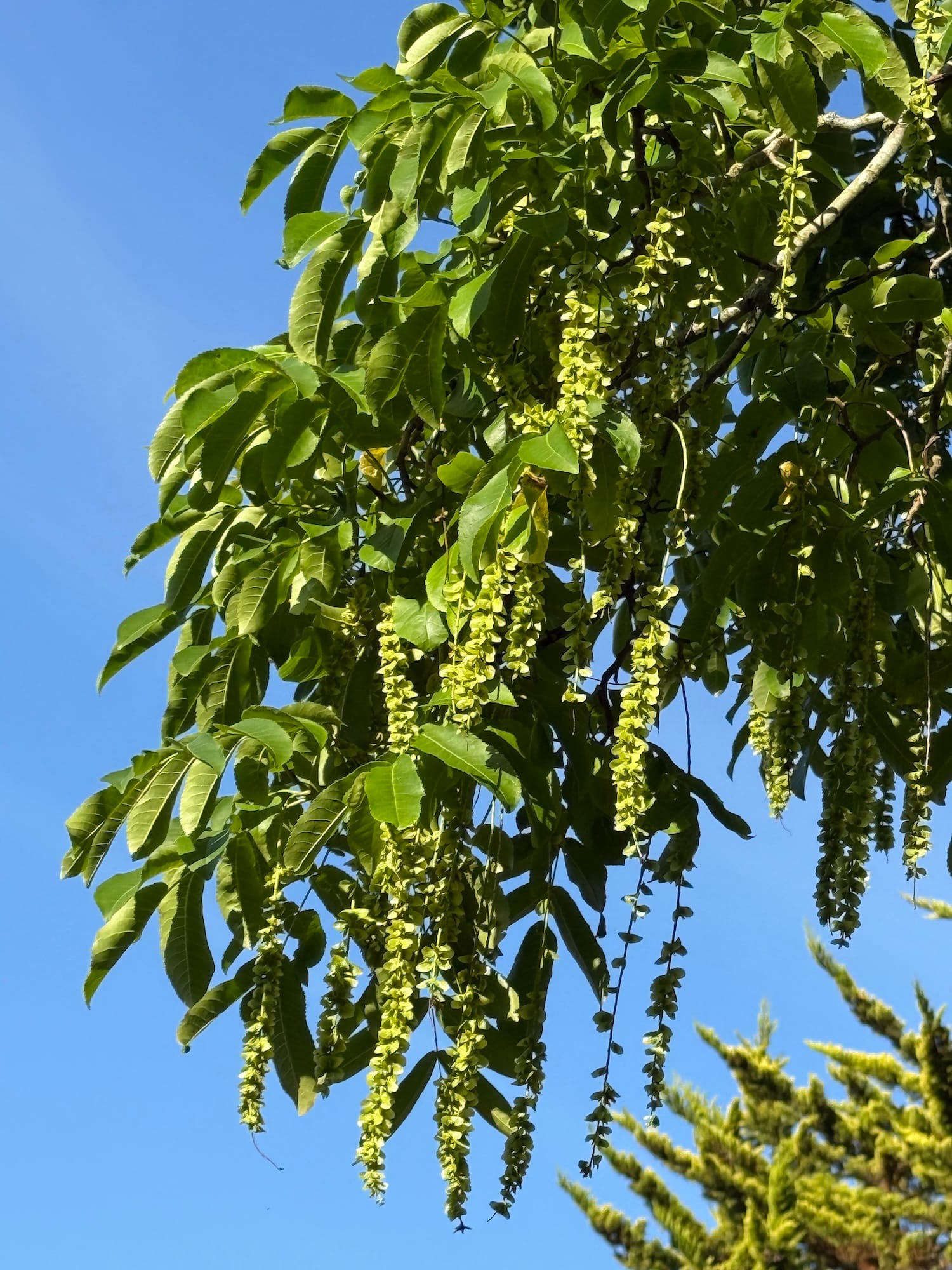
Although they were introduced in the late 1790s via France from Persia, Pterocarya fraxinifolia is rarely grown in British gardens, perhaps because of their tendency to develop suckers that need to be culled annually. If they aren’t, the suckers can create a dense thicket around the main tree. Moreover, as they mature their large shallow roots tend to protrude from the soil which can cause problems when surrounded by lawn, as we have discovered here. Given lots of space, however, they are fast-growing trees that can reach the size of a mature oak within just 25 years – up to 25 metres (82 feet) – with multiple, thick stems and wind-resistant branches. Our tree is probably over 35 years old and is so tall that it is visible from the lawn in front of the Cottage.
The tree’s common name, Caucasian Wingnut, derives from its location of origin and its autumn winged nuts, and the Latin name means pretty much the same thing. The word ‘Pterocarya’ means wing nut with ‘ptero meaning ‘wing – think pterodactyls – and ‘carya’ meaning nut. The word ‘fraxinifolia’ refers to the tree’s leaves which resemble the pinnate leaves of ash trees, ‘Fraxinus’ being the Latin name for ash trees and ‘folia’ meaning leaves.

